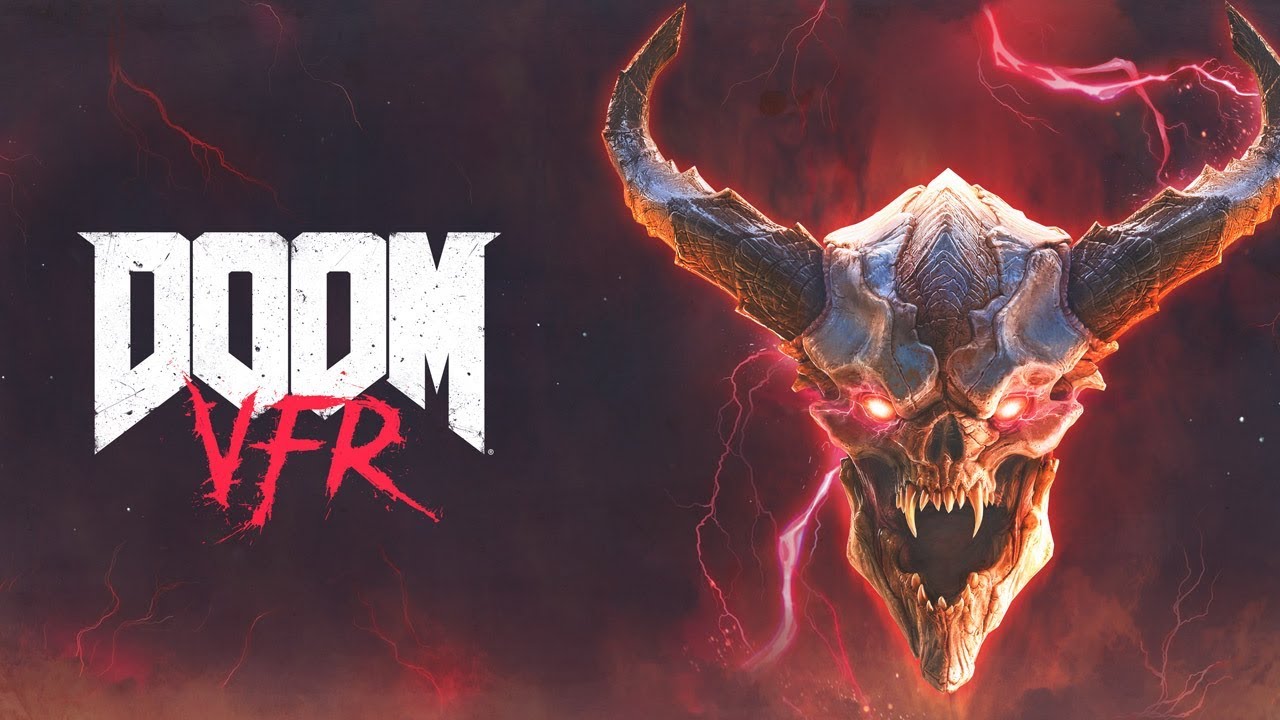2016’s DOOM was a unexpected, energy packed surprise. It blew away everybody’s expectations, including mine.
On the heels of this release then comes DOOM VFR, a new, virtual reality version featuring a new story, main character and combat arenas. But how does the frenetic, movement-based action from a 2D, flat-screen experience translate to virtual reality? Is this as essential as Skyrim VR, or a nice addition that can ultimately be ignored? Let’s explore.
DOOM VFR (I bet you can work out what the F stands for) starts off in the shoes of a brand new character. Having been quickly disemboweled by demons, he wakes up a cyborg with a mission to protect what’s left of his energy production facility. But DOOM 2016, to its benefit, was purposefully disdainful of the story, and while it does feature a bit more heavily here, its nothing to remember. Instead its all about the shooting. And as in last year’s release, the shooting is all about the movement.
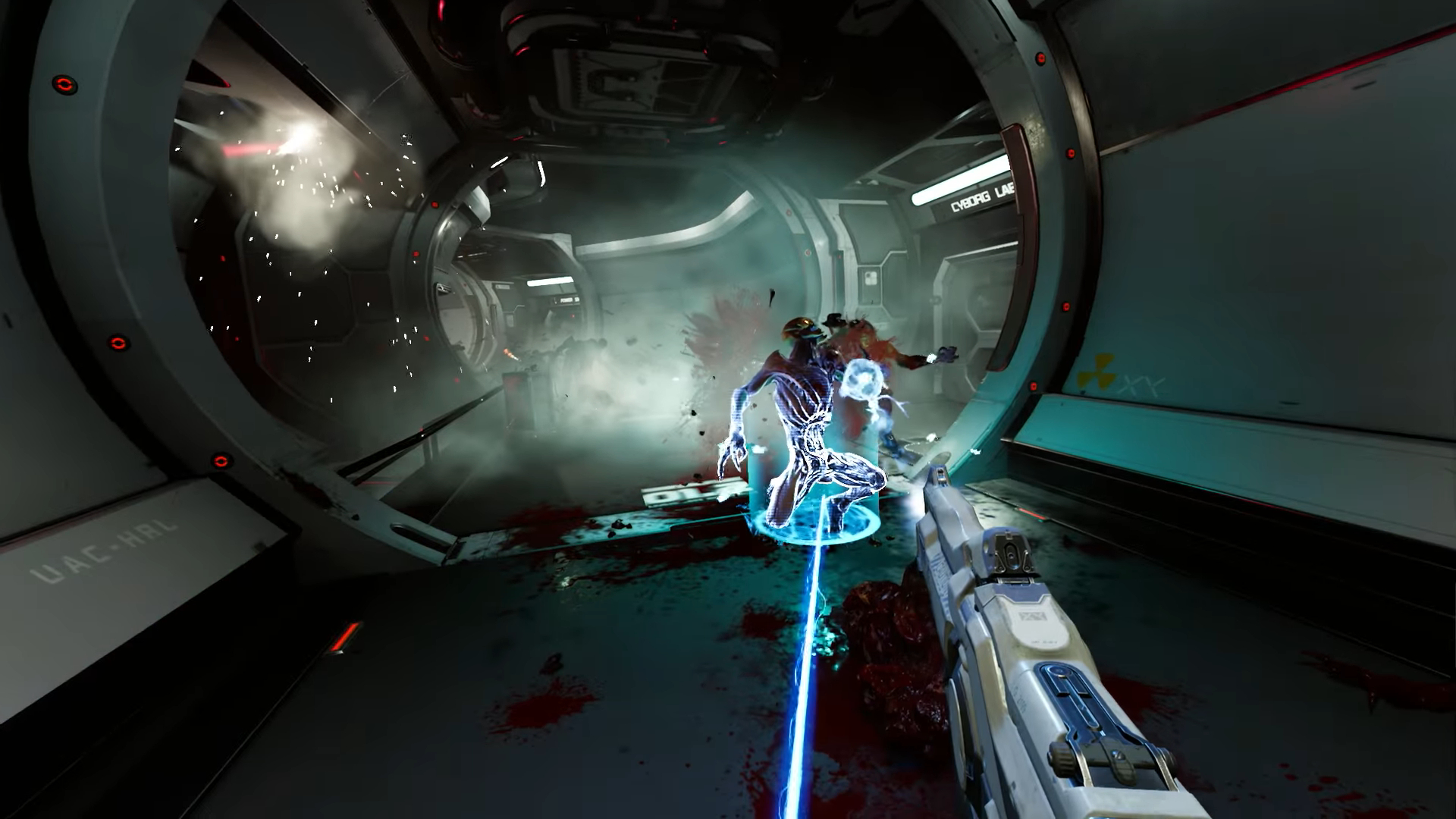
Unlike in most shooters, instead of starting with just the pistol, almost from the get-go you have powerful weapons, to beat powerful demons. A slower ramp up would have been appreciated but it is exciting to see the humongous demons up close so soon after starting. That said, at times there’s a surprising amount of running around not blasting baddies, which felt like a bit of padding. It does however, serve as a hidden tutorial in how to move around.
And DOOM VFR gives you a range of movement options. By default it is set to teleportation, which works as expected. But using the PS Move controllers you can only turn 180 degrees. This makes it difficult to get yourself facing the right direction. Instead you have to rely almost entirely on head tracking. While this can be fine for navigation or smaller fights, the larger arenas were very difficult to traverse without frustratingly crashing up against the control system’s limits, let along causing a decent amount of neck pain. It does include dash buttons but their layout is completely unintuitive and I couldn’t see any way to remap them. It was hard enough remembering where to press during navigation sequences, but in combat teleporting correctly was nearly impossible, and probably lead to me dying more often.
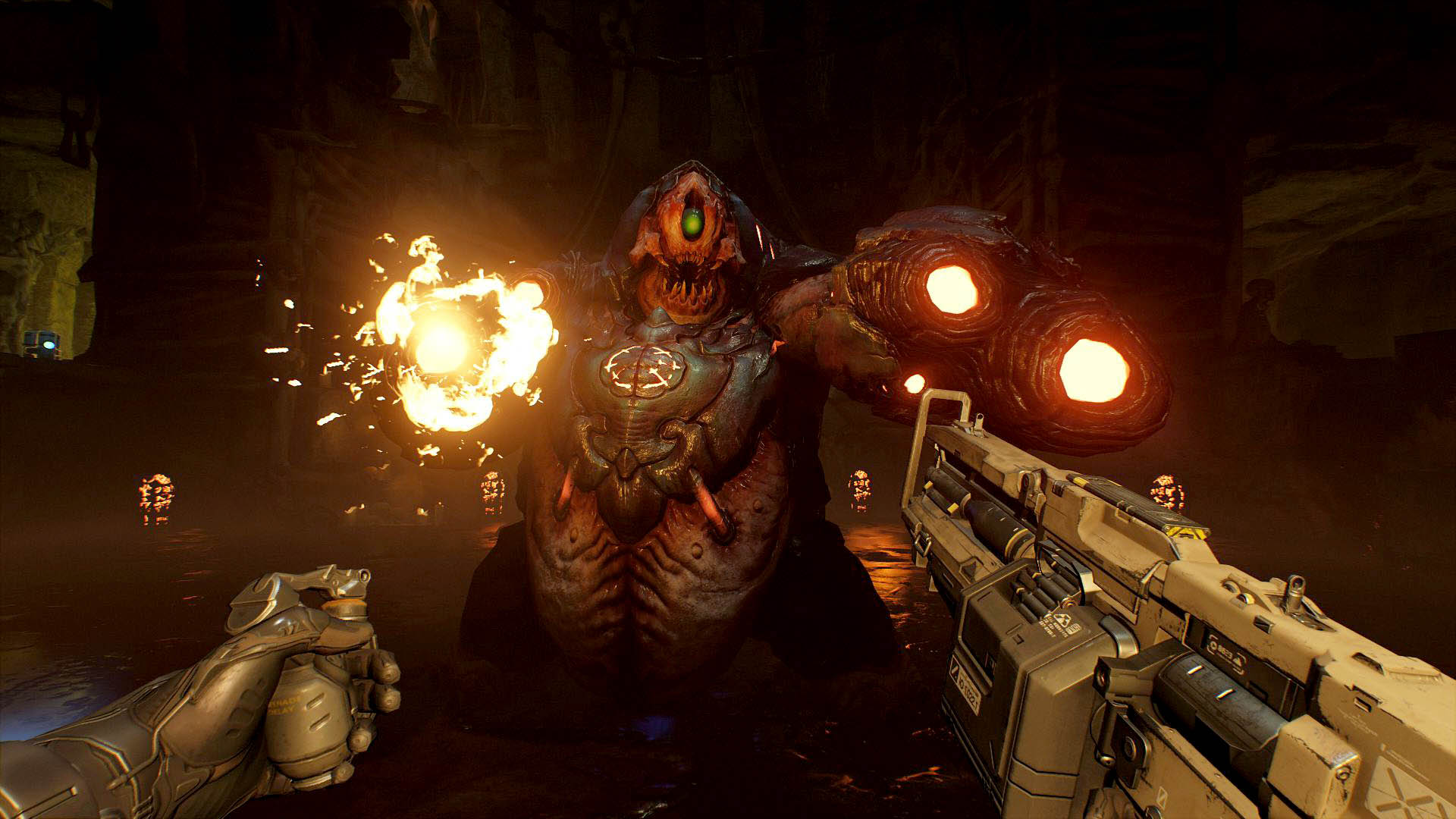
And teleportation is essential. Glory kills make an arresting return, so you need to frequently teleport into enemies. These kills are spectacularly gruesome up close in virtual reality, and the developers have done an impressive job of capturing the scale of enemies. It’s a graphical showcase too, and at least on PS4 Pro looks just like the non-VR game.
DOOM VFR Supports both the PS Move and Dualshock 4 controls. Each had their benefits and drawbacks. The PS Move controllers makes you feel more in control of the two floating arms in front of you. Tracking works very well, especially when tracking your guns. The grenade throw using the left PS Move controller on the other hand, can feel a bit janky in comparison. But it’s hard to move past the lack of turning options on the Move controllers. Conversely, while the Dualshock 4 makes it easier to get around, it feels much more disconnected, with a distinct feeling of being an abstract player rather than a demon-slaying God (the exact feeling Doom 2016 did so well). Movement is also far slower than with either the Move controllers. Slower movement is a boon for generally getting to and fro, but in the midst of combat feels like shackles
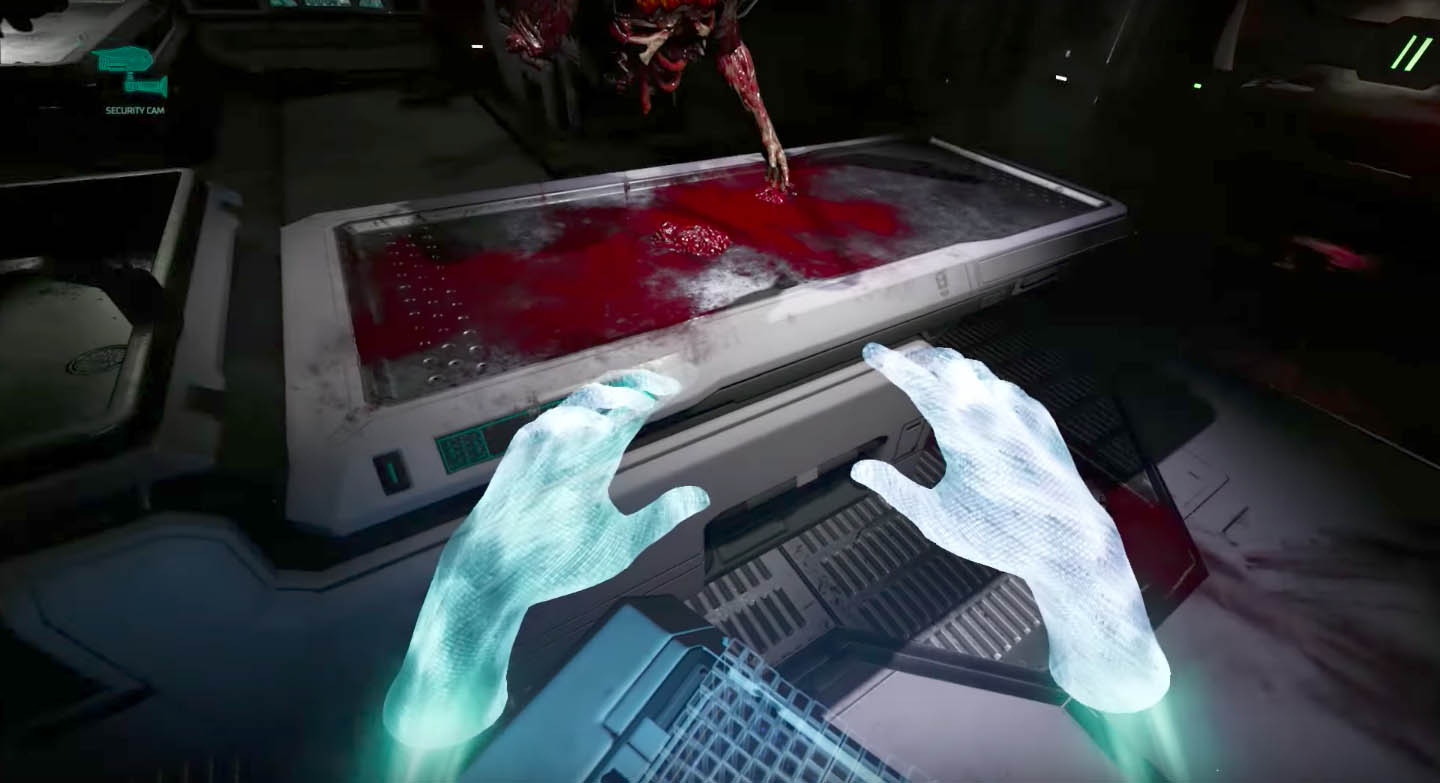
DOOM VFR also supports the PS Aim controller that shipped with Farpoint, and I was able to source a rare Aim controller to test it out. With its two joysticks, its undoubtedly the best way to experience the game, especially when free movement and smooth turning are both turned on. The only strange part is that you use two hands to hold the gun, but that equates only to the right hand in VR, leaving your left hand (which holds your grenades) to be directed by your head. It’s a bit bizarre but the benefits far outweigh this strange downside. If only Aim controllers weren’t so hard to find.
I was sad to see no option for lefties like me either, surely a relatively simple change. It wasn’t a huge issue but I did feel like my aiming was a little let down by a relative lack of fine motor controls in that arm. Normally in non-VR games it doesn’t make a difference, but when you’re physically aiming with a controller rather than an analog stick or keyboard and mouse its a different story.
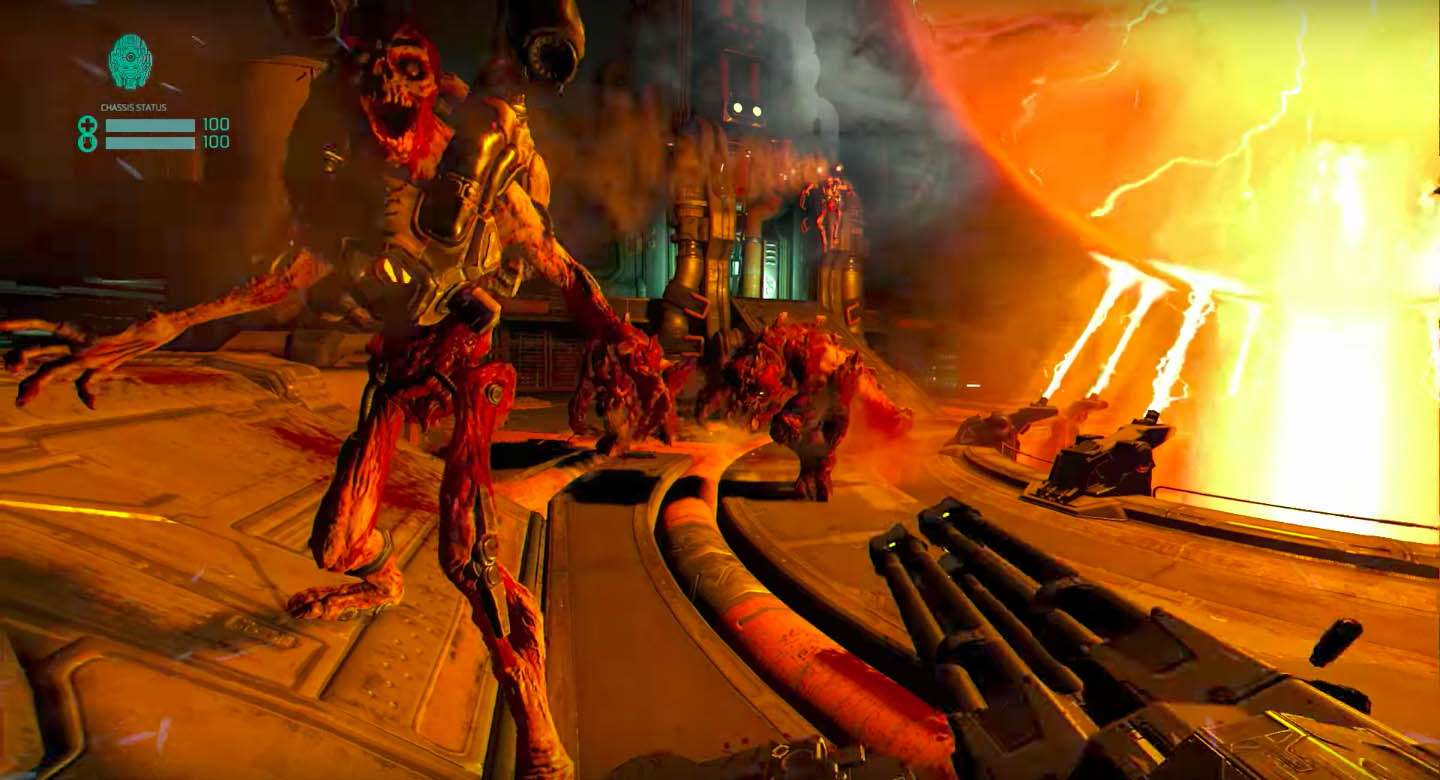
It’s almost cliche now to say a good VR game is let down by poor controls and movement, but it remains the single biggest and fundamental problem in virtual reality game design. Even in small things like how you can’t pick up things with your VR hands, instead relying on a laser-pointer like interface.
But when this game works, it works well. When you are armed with only the beginners pistol and huge demons are towering over you, it’s genuinely frightening. The thrill of glory kills still never gets old. There’s a strong kernel of a good game here, it’s just a shame the best way to play it is found in using a relatively expensive, optional controller. Its also a relatively short game, but at least its price matches its length. It’s been fantastic to see Bethesda’s commitment to virtual reality, and DOOM VFR is a flawed but welcome experiment in bringing the rich, full games that us VR players crave so much.
Released: November 2017
Rating: R16
Platforms: PlayStation 4 / PSVR
Genre: Action, FPS
Developer: id Software
Publisher: Bethesda</p

